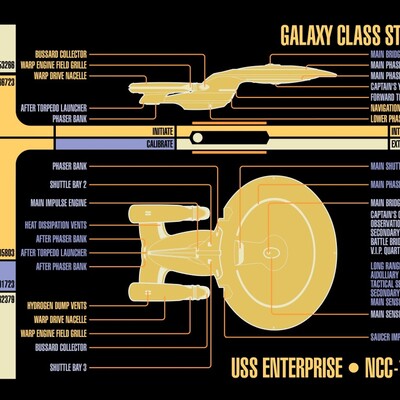Did anyone say Magabyte yet?
1/6th of a MAGAbyte is an insurrection
Ugh. I hate you.
Upvoted.
The Indians use Crore and Lakh
They use those for everything
my harddrive is 250 toby keiths and my processer is 500 lee greenwoods
@cupcakezealot @BmeBenji why not 100 trumps processor rate.
Because trump’s processor doesn’t have an IPC. It uses CPI instead and w’d have to start using scientific notation
i dunno that much seems almost criminal
@cupcakezealot yeah but I’d love to hear about megatrumps. but that could also be a measure for mass destruction
Imperial, obviously: F(reedom)T(ons) and fractions thereof. 1FT is the amount of data that it takes to store the entire King James edition of the New Testament and the Bill of Rights as a PDF.
Most people would use “word”, “half-word”, “quarter-word” etc, but the Anglophiles insist on “tuppit”, “ternary piece”, “span” and “chunk” (that’s 5 bits, or 12 old bits).
- A nugget: 1 bit
- A tendy: 1 byte
- A hot dog : 1 kb
- A hamburger: 1 mb
- A KFC bucket: 1 gb
The conversion to metric is way to easy
TiB
One tebibyte equals 2^40 or 1,099,511,627,776 bytes.
What makes that more intuitive than any of the others?
I thought you wanted it to be more american
Yeah, American stuff makes sense unlike the metric system which is completely unintuitive /s
This whole post is meant to be a joke. The metric prefixes are perfectly understandable even if they’re technically off the decimal benchmarks by a handful of bytes
Metric is intuitive, but also shit. Just because you have 10 fingers doesn’t mean you should formulate a measurement system out of it. In fact if you actually give a shit about intuitiveness you’d go back to the American system which is roughly base 12 and therefore easier for division and manual estimations.
K/M/G/T/P = decimal prefixes. K is 1000. M is 1,000,000. etc.
Ki/Mi/Gi/Ti/Pi = binary prefixes. Ki is 2¹⁰ (1024), Mi is 2²⁰ (1,048,576), etc.
It’s a disambiguation of the previous system where we would use KB to interchangeably mean 1000 or 1024 depending on context.
A milebyte is 5280 bytes
Football fields, Olympic size swimming pools, hotdogs, and quarters
All, of course based on how many kerned 1s and 0s (alternatingly) you could fit printed in 12pt Times New Roman font within the thing’s length.
Also, you need to alternate rounding your error (i.e. quarter rounds down, but hotdog rounds up, etc)
Dec = 10 Cent = 100 Mil = 1000
Using historical, global linear language sounds good to me
Metric uses those for numbers less than 1, a situation that doesn’t arrise in computing. There is nothing less than a bit, whether its set to 1 or 0.
If you wanna be American, you gotta start thinking outside the box. A bit has two states, right? So a half-bit has only one state. Half-bits are truly American.
All hail Analog! ;P
On the contrary.
KB = 1,000 bytes and MB = 1,000,000 is empirical.
KiB = 1024 bytes or 210 and MiB = 1,048,576 or 220 is Metric.
Remember, empirical is the miserable system the rest of the world abandoned because it made math and science difficult. KB makes storage miserable, never being clear whether your have the exact space your box claims it does. Please continue to FreeTM yourself from British “nonsense”, while the rest of the world evolves.
Empirical means based on data. The word you are looking for is imperial.
Also, metric measurements are in base 10, so you have it backwards.
Thank you for majoring in English. We need people like you to ruin the peace in this fragile world.
Many people are learning English as a foreign language through using it on the internet. Lazy native speakers hsing it incorrecrly despite knowing it better makes that very difficult, as they learn mistakes they later have to unlearn.
I am always glad when people point out such mistakes, for this reason.
man’s actually taking the piss at OP’s use of “empirical” instead of “imperial”
also, i doubt that measurements of data can be imperial or metric; even Bytes themselves are just measurements of 8 bits.
Hmmm… There are as many ounces in a cup as there are bits in a byte.
Maybe the first byte fit in a cup.
It’s all in good fun. No need to spoil the joke.
Where did you get this from? Yeah KiB means 1024 and KB is 1000 but that’s not a difference between metric and imperial, judging from the Wikipedia article it seems it was just a matter of using 1024 for technical purposes and 1000 for marketing / simplicity. If anything the article says the metric systems(SI) rule of kilo meaning 1000 means KB is metric.
If anything this shows some of the weakness of metric and it’s use of base 10. Yeah it works great in science and some math when we’re usually talking in base 10, but that’s not the only base you can use. In base 2 some of the imperial measurements are easier to deal with and convert between then metric for example
1 liter = 1111101000 ml 1 gallon = 10000000 fl oz
1 kg = 1111101000 g 1 pound = 10000 oz
The reverse of the above metric conversions, and all base 10 negative exponents, is a repeating number in binary which has to be truncated and leads to inaccurate calculations.
Systems of measure are arbitrary, there’s no superior logical one because different systems of measure work better in different systems of math.
From smallest to biggest:
Bits (basic unit)
Bytes (8:1 reduction)
Words (4:1 reduction)
KiB (32:1 reduction)
MiB (1024:1)
GiB (1024:1)
TiB (1024:1)
PiB (1024:1)
A normal amount of porn (237:1)
Words aren’t always four bytes
Words (4:1 reduction)
Word is imperial unit. Like one british gallon is not equal to one us gallon, one x86 word is not equal one ARM word.
All definitely not metric as metric uses steps of 1000 (and there’s also 10 and 100 and 1/10th and 1/100th but that doesn’t extend to 10000 and 1/10000th).
The KiB, MiB, etc, the 2^10 scale is called binary prefixes (as opposed to decimal prefixes KB, MB, etc) and standardised by the IEC.
And while the B in KiB is always going to mean eight bits it’s not a given that a byte is actually eight bits, network people still use “octet” to disambiguate because back in the days there were plenty of architectures around with other byte sizes. “byte” simply means “smallest number of bits an operation like addition will be done in” in the context of architectures. Then you have word for two bytes, d(ouble)word for four, q(uad)word for eight, o(cto)word for 16, and presumably h(ex)word for 32 it’s already hard to find owords in the wild. Yes it’s off by one of course it’s off by one what do you expect it’s about computers. There’s also nibble for half a byte.
The bit, at least, is not under contention everyone agrees what it is. Though you can occasionally see people staring in wild disbelief and confusion at statements such as “this information can be stored in ~1.58 bits”. That number is ~ log2 3, that is, the information that fits in one trit. Such as “true, false, maybe”.
So you’re saying my proposed imperial units depend on where you are, and who is using them, for what purpose? That just sells me on them as imperial units even more. :)
Thank you for the details.
Great write up, glad to see mention of nibble (my favorite lol)… You forgot to mention byte order (Little/Big Endian).
How about feet of IBM punch cards?
A 1 foot tall stack holds 1,647,360 bits of data if all 80 columns are used. If only 72 columns are used for data then it’s 1,482,624 bits of data and the remaining columns can be used to number each card so they can be put back in order after the stack is dropped.
I like this because the amount of bits in a stack can vary depending on whose foot you use to measure, or the thickness of the card stock.
IBM standard cards are one 48th of a barleycorn thick. I believe IBM measured from the 1932 Iowa Reference Barleycorn, now kept in the vault inside Mt Rushmore.
THIS is what I’m talking about!
why go for RAMs when the constitution says ARMs…
and no more bits or bytes too, double bytes small or quadbytes regular size all the way.
-
kilo bytes is a grand
-
mega bytes is a venti
-
giga bytes is a grand venti
-
terabytes is a doble venti
really large amounts of ARM is a ton
-
I’m surprised there aren’t more suggestions which use intentionally-similar abbreviations. The American customary system is rich with abbreviations which are deceptively similar, and I think the American computer memory units should match; confusion is the name of the game. Some examples from existing units:
- millimeter (mm) vs thou (mil)
- meter (m) vs mile (mi)
- kilo (k) vs grand (G)
- kilonewtons (kN) vs knots (kn)
- statute mile (m/sm) vs survey mile (mi) vs nautical mile (NM/nmi) vs nanometer (nm)
- foot (ft) vs fathom (ftm)
- chain (ch) vs Switzerland (ch)
- teaspoon (tsp) vs tablespoon (tbsp)
- ounce (oz) vs fluid ounce (fl oz) vs troy ounce (ozt) vs Australia (Ozzie)
- pint (pt) vs point (pt)
- grain (gr) vs gram (g)
- Kelvin (K) vs Rankine (R; aka “Kelvin for Americans”)
- short ton (t) vs long ton (???) vs metric tonne (t) vs refrigeration ton (TR)
The knot is non-SI but perfectly metric and actually makes sense as a nautical mile is exactly one degree meridian. kn also doesn’t clash with kN, Newtons are always written with capital N. Capitalisation generally matters. No standard abbreviation exists for nautical miles but definitely don’t use nm because newton metres.
That is, if you take all those colonial units out of there suddenly you’re left with SI units and things that work well with SI units.
Oh and a pint is 500ml, a pound is 500g, a hundredweight is 50kg (because 100 pound), and a teaspoon is rather approximate because everyone outside of North America will use an actual spoon you stir tea with. The important part is not the precise amount but distinguishing it from “a pinch” etc. I guess by extension ounces should be 25ml and 25g. While we’re at it: An inch is 25mm, and a foot an even 1/3rd of a metre while a yard is exactly one metre.
Did you know that a Newton metre is about exactly one chocolate bar metre? The work it takes to lift it in about standard gravity, that is. Very intuitive.
t for ton is a quirk in SI, you can use Mg if you want. There’s also other SI-adjacent strangeness such as the hectare, which is one hecto-are: While SI has meters for length and litres for volume somehow the are isn’t official for area.
The knot is non-SI but perfectly metric and actually makes sense as a nautical mile is exactly one degree meridian
I do admire the nautical mile for being based on something which has proven to be continually relevant (maritime navigation) as well as being brought forward to new, related fields (aeronautical navigation). And I am aware that it was redefined in SI units, so there’s no incompatibility. I’m mostly poking fun at the kn abbreviation; I agree that no one is confusing kilonewtons with knots, not unless there’s a hurricane putting a torque on a broadcasting tower…
No standard abbreviation exists for nautical miles
We can invent one: kn-h. It’s knot-hours, which is technically correct but horrific to look at. It’s like the time I came across hp-h (horsepower-hour) to measure gasoline energy. :(
if you take all those colonial unit
In defense of the American national pride, I have to point out that many of these came from the Brits. Though we’re guilty of perpetuating them, even after the British have given up on them haha
An inch is 25mm, and a foot an even 1/3rd of a metre while a yard is exactly one metre.
I’m a dual-capable American that can use either SI or US Customary – it’s the occupational hazard of being an engineer lol – but I went into a cold sweat thinking about all the awful things that would happen with a 25 mm inch, and even worse things with 3 ft to the meter. Like, that’s not even a multiple of 2, 5, or 10! At least let it be 40 inches to the meter. /s
There’s also other SI-adjacent strangeness such as the hectare
I like to explain to other Americans that metric is easy, using the hectare as an example. What’s a hectare? It’s about 2.47 acre. Or more relatable, it’s the average size of a Walmart supercenter, at about 107,000 sq ft.
1 hectare == 1 Walmart
No standard abbreviation exists for nautical miles but definitely don’t use nm because newton metres
Since as you mentioned Newtons are
Nnotn, Newton meters areNm.nmmeans nanometer.yep brainfart too many newtons in the sentence before that
We already have a confusing abbreviation:
Bvsb. One is bits, one is bytes.It’s a pretty drastic difference. One Gb per second is only 125 MB per second. Don’t mess up your capitalization!
It’s for this reason I sometimes spell out the Bytes or bits. Eg: 88 Gbits/s or 1.44 MBytes
It’s also especially useful for endianness and bit ordering: MSByte vs MSbit









